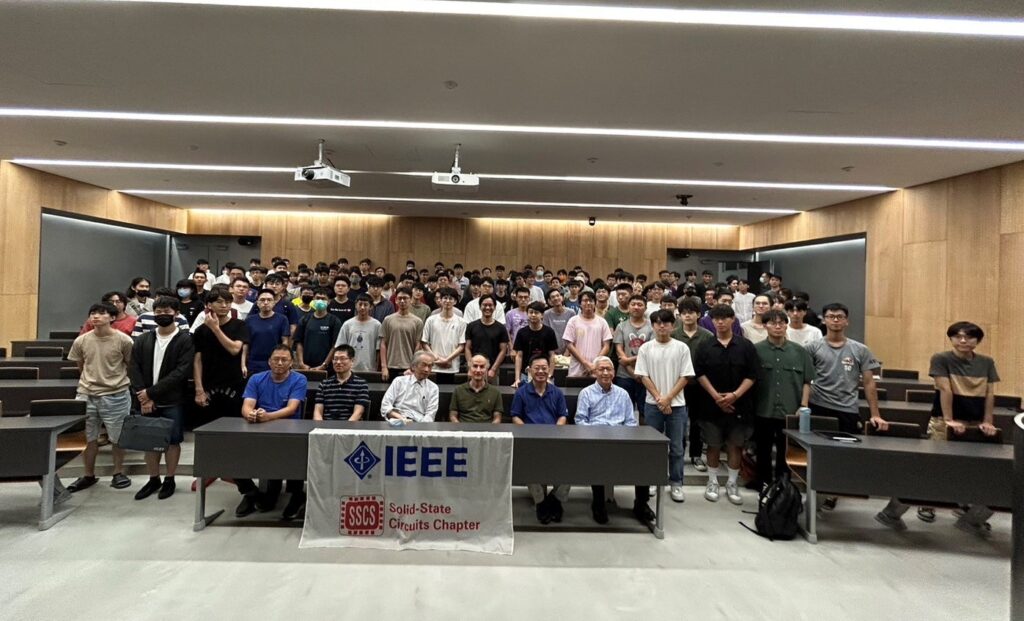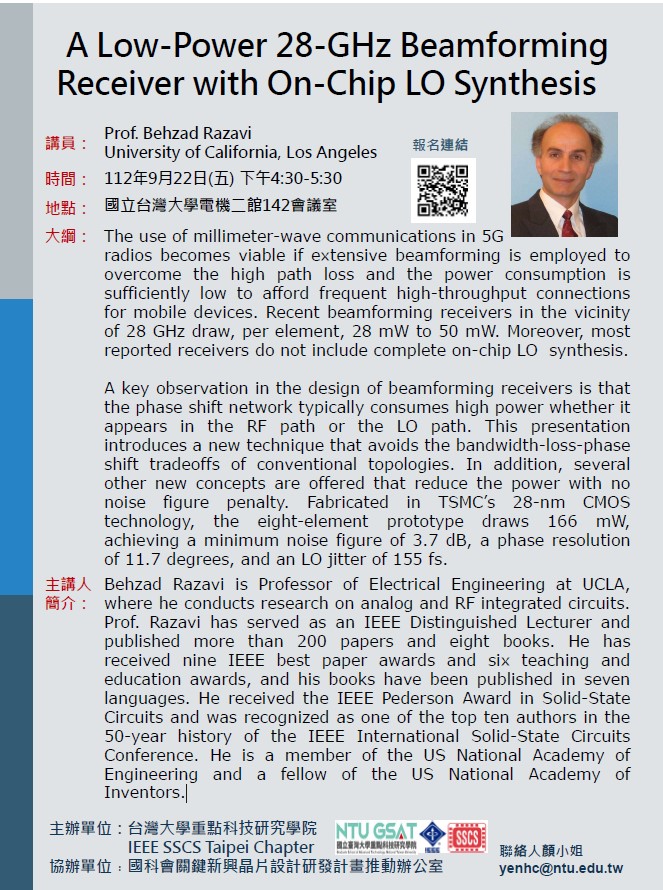

Abstract:
The use of millimeter-wave communications in 5G radios becomes viable if extensive beamforming is employed to
overcome the high path loss and the power consumption is sufficiently low to afford frequent high-throughput connections for mobile devices. Recent beamforming receivers in the vicinity of 28 GHz draw, per element, 28 mW to 50 mW. Moreover, most reported receivers do not include complete on-chip LO synthesis.
A key observation in the design of beamforming receivers is that the phase shift network typically consumes high power whether it appears in the RF path or the LO path. This presentation introduces a new technique that avoids the bandwidth-loss-phase shift tradeoffs of conventional topologies. In addition, several other new concepts are offered that reduce the power with no noise figure penalty. Fabricated in TSMC’s 28-nm CMOS technology, the eight-element prototype draws 166 mW, achieving a minimum noise figure of 3.7 dB, a phase resolution of 11.7 degrees, and an LO jitter of 155 fs.
Biography:
Behzad Razavi is Professor of Electrical Engineering at UCLA, where he conducts research on analog and RF integrated circuits. Prof. Razavi has served as an IEEE Distinguished Lecturer and published more than 200 papers and eight books. He has received nine IEEE best paper awards and six teaching and education awards, and his books have been published in seven languages. He received the IEEE Pederson Award in Solid-State Circuits and was recognized as one of the top ten authors in the 50-year history of the IEEE International Solid-State Circuits Conference. He is a member of the US National Academy of Engineering and a fellow of the US National Academy of Inventors.